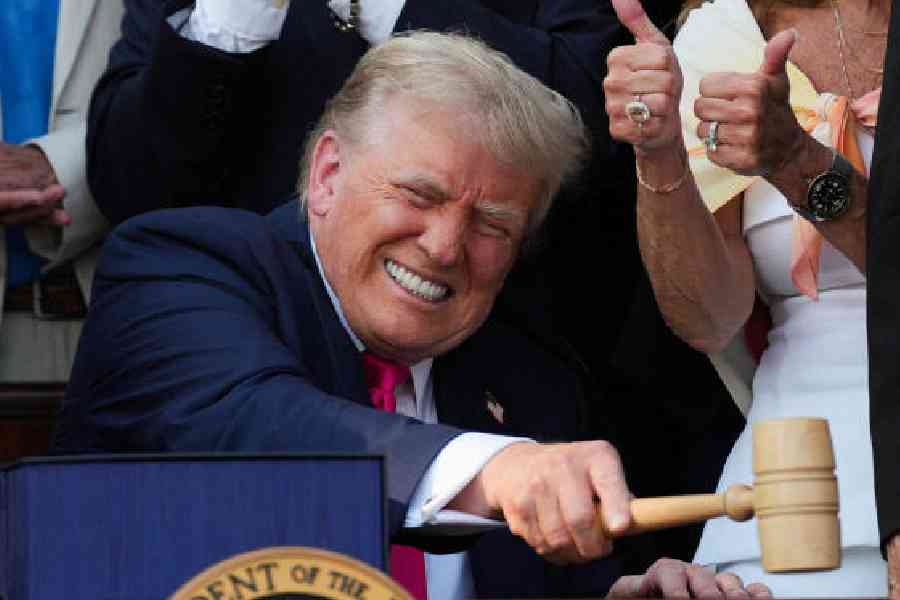The ink is not even dry on the far-reaching domestic policy law that President Donald Trump signed on Friday, and already state governments are bracing for impact as Washington shifts much of the burden for health care, food assistance and other programmes onto them.
Governor J.B. Pritzker, Democrat of Illinois, and legislative leaders might hold a special session to deal with the new law, even though the recently passed state budget already includes $100 million to cover shortfalls in federal funding.
Another Democrat, governor Katie Hobbs of Arizona, has warned that even her state’s $1.6 billion emergency fund will be insufficient to weather what’s coming, because “even if we cut every single thing in the state, we don’t have the money to backfill all these cuts”.
Even before the bill’s final passage, state capitals were contending with a slowing economy and federal spending cuts implemented by the department of government efficiency run by Elon Musk. Now they will be expected to administer complex new work requirements for Medicaid and food aid; rework some state health insurance exchanges under the Affordable Care Act; and decide how much they can do to keep their citizens insured and fed once they start losing federal assistance.
“What’s happening in Washington, DC, is undermining everything we’ve been working on,” said governor Laura Kelly of Kansas.
State budgets have been generally strong in recent years as a result of billions in Covid-19 relief money, economic growth and a record-breaking stock market that has generated more taxes than anticipated. A robust jobs report on Thursday looked rosier that expected, in large part because gains in state and local government employment last month obscured stagnant job growth in the private sector.
Many states, both red and blue, have also enthusiastically cut taxes for residents and businesses. In the face of deep federal cuts, some states will probably be inclined to pause those reductions rather than reverse them, said Jared Walczak, the vice-president of state projects at the Tax Foundation, a non-profit tax policy group that generally favours lower taxes.
But in recent weeks, states have been balancing budgets that are fraught with uncertainties. Most state governments’ fiscal years began on Tuesday, but governors and legislators have had to keep an eye on specific provisions in the federal bill that could have outsize effects, such as a $50 billion fund for rural hospitals to offset the impact of Medicaid cuts (which was ultimately included) and the sale of millions of acres of public lands (which was not).
Now that the fine print in the President’s package is coming into focus, Carl Davis, the research director at the Institute on Taxation and Economic Policy, a Left-leaning research group, said that states would have three main options for dealing with the new law.
“They can scale back their investments in health and food assistance that are directly affected by the federal legislation,” he said. “They could shuffle money around to preserve health insurance — ‘Hey, we don’t want 600,000 North Carolinians to lose health insurance, but we’re going to take money away from education to do it.’”
“Or,” he said, “we can see tax increases.”
Some states will use “a mix of all three”, Davis added.
Trump’s law includes nearly $1 trillion in cuts to Medicaid by 2034, scaling back the programme that pays for the health care of roughly 78 million adults and children. It also sharply curtails federal spending on the Supplemental Nutrition Assistance Programme, or SNAP, which provides monthly food assistance payments to about 42 million families.
A new requirement that Medicaid enrollees prove they are employed every six months also leaves states with the difficult task of building out software systems to track eligibility by the end of 2026. Experts said states could face software glitches that may cause delays in enrollment or leave eligible children and parents without health care.
In addition, states that run their own exchanges to sell subsidised health insurance through the Affordable Care Act will have to institute additional paperwork burdens for recipients. And states are also required to administer new SNAP work requirements.
New York Times News Service











